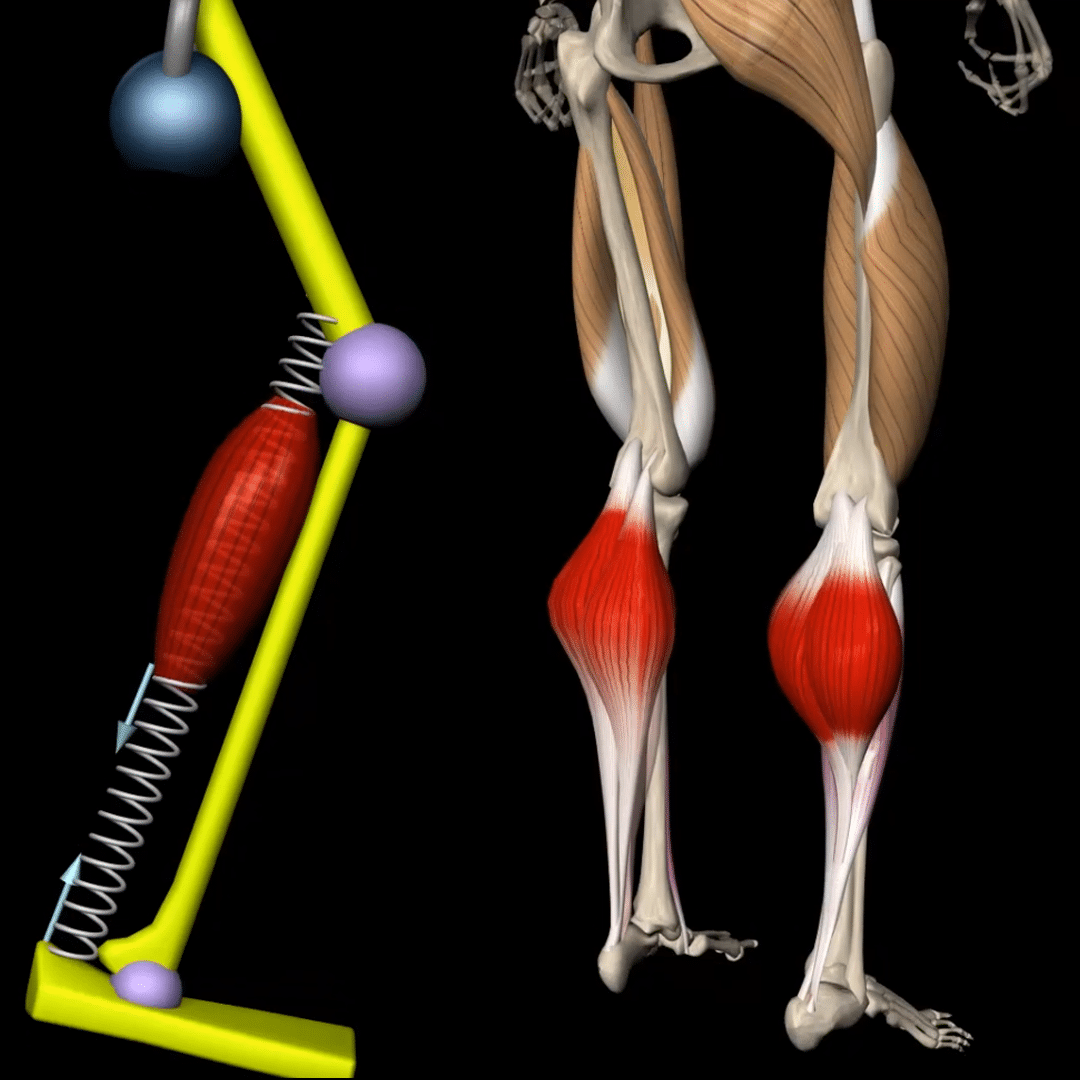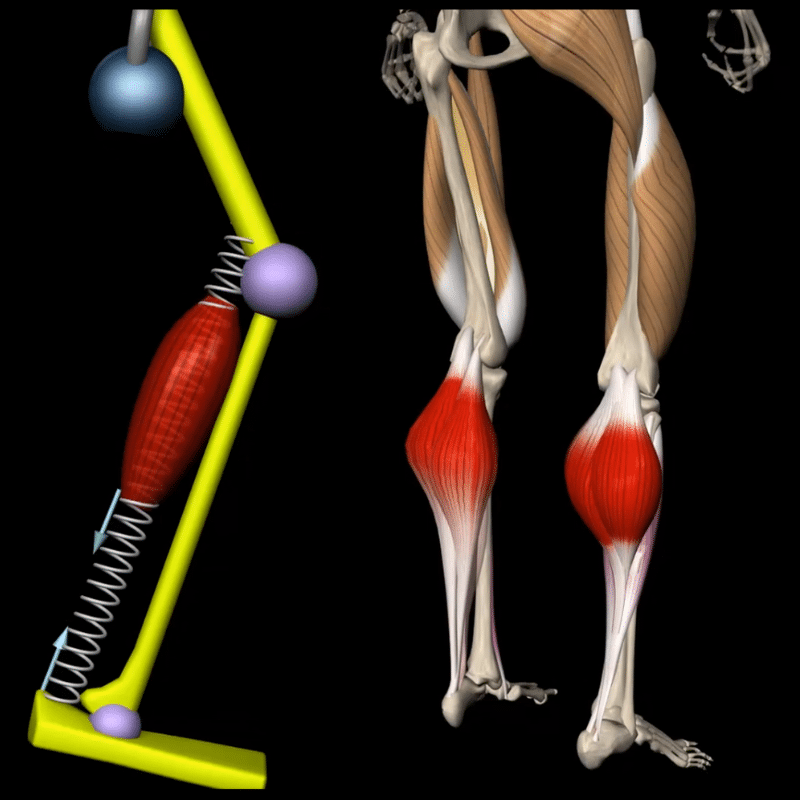Plyometric exercises involve explosive movements designed to increase strength, speed, and agility. By engaging the stretch-shortening cycle of the muscles, these exercises leverage the force of elastic energy to improve athletic performance.
This Muscle and Motion article delves into the science behind plyometrics, outlines beginner and advanced techniques, and offers advice on integrating these powerful exercises into your fitness regimen.

The science behind plyometrics
Plyometric training utilizes the stretch-shortening cycle (SSC), a dynamic process that enhances muscular power and performance through a sequence of movements. This cycle is comprised of three key phases: the eccentric pre-stretch, the amortization phase, and the concentric shortening phase, each contributing to the effectiveness of plyometric exercises for both rehabilitation and performance enhancement in sports.
-
Eccentric Pre-Stretch Phase
This phase prepares the muscle by stretching, enhancing forceful contractions through a neurophysiological response. The effectiveness depends on the stretch’s magnitude, rate, and duration.
-
Amortization Phase (Time to Rebound) Phase
The amortization phase is the time delay between overcoming the negative work of the eccentric pre‐stretch to generate the force production and accelerating the muscle contraction and the elastic recoil in the direction of the plyometric movement pattern.
A shorter amortization phase means quicker, more powerful movements as energy is efficiently converted into motion. If too long, energy dissipates, reducing the effectiveness of the exercise by failing to properly activate the stretch reflex and diminishing the power of the subsequent muscle contraction. The goal is to minimize this phase to enhance plyometric effectiveness.
-
Concentric Shortening Phase
The final phase is where the muscle contracts, using its elastic properties to produce power. This phase is characterized by the resultant power production and is influenced by the biomechanical responses initiated in the earlier phases.
The benefits of plyometric training
Plyometrics offers several advantages for enhancing athletic performance, particularly for the upper and lower extremities. These benefits include:
- Increased power and velocity: Plyometrics can boost both average power and the velocity at which an athlete moves, making movements more explosive.
- Enhanced peak force and acceleration: Athletes can achieve higher peak forces and faster acceleration speeds, which is crucial for many sports.
- Extended time for force development: This type of training allows more time to generate force, contributing to stronger, more powerful movements.
- Energy storage: Plyometrics help in storing more energy in the elastic components of muscles, which can be released for explosive movements.
- Higher muscle activation levels: These exercises can lead to heightened levels of muscle activation, enhancing overall muscular engagement and efficiency.
- Activation of stretch reflexes: Plyometric training can evoke stretch reflexes, contributing to the efficiency of the stretch-shortening cycle and improving reactive strength.
To maximize the benefits of plyometric exercises, you should tailor your plyometric routine to match your fitness goals. Focus on short, explosive drills like sprint starts and agility ladders for speed. To enhance vertical jump, incorporate depth jumps and weighted squat jumps.
Safe and effective entry into plyometric
Starting plyometric training delivers exciting benefits, like boosting muscle power and performance by adjusting the body’s natural limits. However, it’s important to ease into plyometrics with care. Plyometric exercises allow for greater force production by reducing the sensitivity of the Golgi tendon organ, which also diminishes the body’s built-in protection against overexertion.
This reduction in Golgi tendon organ sensitivity can increase the risk of injury if the muscles and tendons are subjected to excessive stress before they are adequately conditioned.[1]
Therefore, it’s essential to incorporate plyometric training gradually, focusing on proper technique and progressively increasing the intensity of the exercises. This approach helps ensure that the musculoskeletal system adapts safely, reducing the risk of injuries that could occur from pushing too hard or too soon.
Tips to avoid injury
- Proper warm-up: Before engaging in plyometric drills, perform a thorough warm-up to prepare the muscles and joints. This could include dynamic stretches and light cardio.
- Strong foundation: Plyometric training should follow or be integrated with foundational strength and flexibility training. Ensure you have a solid base of general fitness, strength, and flexibility before increasing the intensity of plyometric exercises.
- Isolate before integrating: Begin with exercises that isolate specific movement patterns or muscle groups. Once proficiency is achieved, combine these into more complex, coordinated movements to mimic sports-specific activities.
- Progression and overload: Gradually increase the challenge (like more jumps, higher jumps, or adding weights) to safely push the athlete’s limits.
- Quality over quantity: Focus on doing each jump or sprint with maximum effort and proper form, rather than doing lots of low-quality repetitions. This ensures the fast-twitch muscle fibers, crucial for explosive power, are effectively engaged.
- Listen to your body: If you’re showing signs of fatigue, such as losing form, it’s time to stop the plyometric part of your workout to avoid injury and ensure you’re getting the most out of the exercise.
- Recovery is key: After intense plyometric sessions, give the body more time to recover than you might with less intense workouts. A good rule of thumb is to wait 48-72 hours before the next high-intensity plyometric session to allow the muscles to repair and strengthen.
- Tailor to individual needs: Consider your goals, injury history, and fitness level. Adjust the exercises, intensity, and volume accordingly to ensure safety and effectiveness.
In summary, plyometric exercises boost strength, speed, and agility by using muscle stretch-shortening cycles. They offer benefits like increased power, peak force, and acceleration. To start safely, begin gradually, focus on technique, and tailor your routine to your goals, fitness level, and injury history.
Explore our Strength Training App for a wide range of plyometric exercises, detailed anatomy analysis, and step-by-step instructions.
Want an in-depth guide on how to build a plyometric training program? Check out this article.
Ever wondered what makes our anatomical animations so accurate and engaging? Click here to learn about our Quality Commitment and the experts behind our content.
At Muscle and Motion, we believe that knowledge is power, and understanding the ‘why’ behind any exercise is essential for your long-term success.
Let the Strength Training App help you achieve your goals! Sign up for free.
Reference:
- Davies G, Riemann B, Manske R. Current concepts of plyometric exercise. Int J Sports Phys Ther. 2015;10(6):760-786.
- Stojanović E, Ristić V, McMaster DT, Milanović Z. Effect of plyometric training on vertical jump performance in female athletes: A systematic review and meta-analysis. Sports Med. 2017;47(5):975-986. doi:10.1007/s40279-016-0634-6
- Beato M, Bianchi M, Coratella G, Merlini M, Drust B. Effects of plyometric and directional training on speed and jump performance in elite youth soccer players. J Strength Cond Res. 2018;32(2):289-296. doi:10.1519/jsc.0000000000002371


